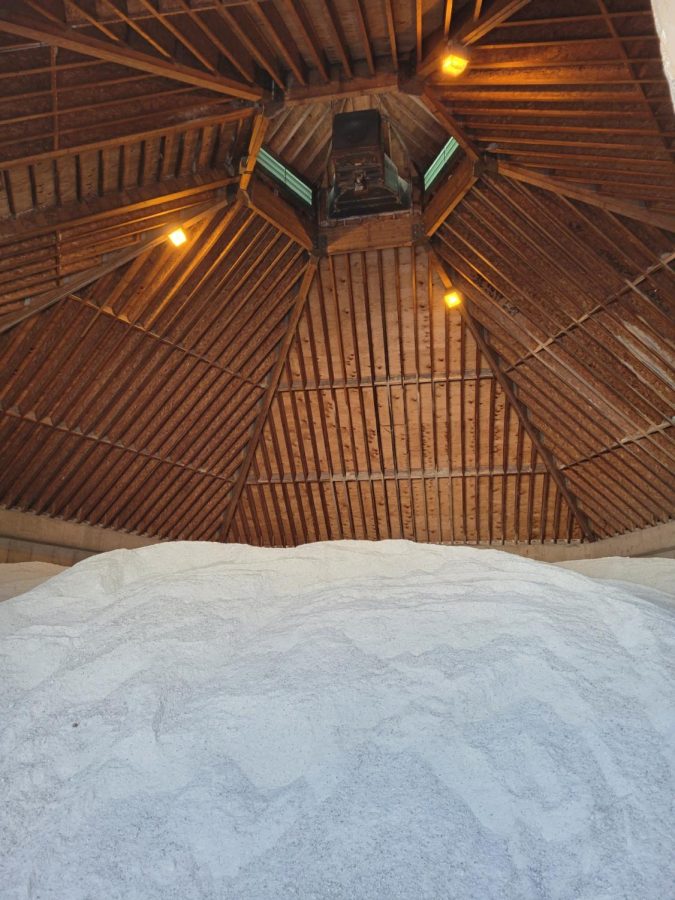Over 6,000 tons of road salt are stored within 2 miles of Marquette University’s campus. That same salt may end up on the road or in Wisconsin residents’ drinking water. The balance between public safety and environmental impacts of road salt is one some Wisconsinites are attempting to navigate.
“We’re not telling people to abandon the use of salt. We’re telling people to use the salt that they put down as something that has impacts and to use it in the best way possible,” Phil Gaebler, water resources engineer for the City of Madison, said.
This salt is the concern of UW-Milwaukee assistant professor of geosciences Charles Paradis. He’s currently working on a study concerning the potential impacts of road salt on both rivers and groundwater
“We think that some of the road salt is stored in the groundwater and then released to the river water in the summer, so far the data suggests that would be the case,” Paradis said.
Road salt commonly contains both sodium and chloride, which can be pollutants to the environment and certain bodies of water, including drinking water.
“Chloride is toxic to aquatic organisms that are adapted to live in freshwater, it’s a stressor for their system. If we are drinking sodium, that has health impacts for us as well,” Allison Madison, sustainability and development coordinator for Wisconsin Salt Wise, said. “Chloride concentrations tend to go up faster because some of the sodium gets caught in the soil but we are also seeing sodium concentrates increase in drinking water.”
Potable water and aquatic organisms aren’t the only things to consider when talking about the environmental impacts of road salt.
“It also can change the way that lakes function when they turn over since you create this hypersaline bottom liquid that doesn’t let the oxygenated water from the spring melt get to the bottom of the lake and I think that’s going to come back to have significant environmental impacts,” Gaebler said.
Gaebler and Madison said that one of the primary ways to avoid the potential for environmental damage is to look into other de-icing methods to ensure public safety besides salt. Once the temperature drops below 15 degrees Fahrenheit most road salts aren’t effective. Alternative options include using sand to create traction or using products with a lower melting point.
“When you don’t use these practices you end up over-applying salt because a lot of the salt they put down either doesn’t have time to work or doesn’t stay in place. You have to give the salt enough time to work and for it to stay where you put it,” Gaebler said.
Another way to lessen salt use is to calibrate equipment to keep track of how much salt is being applied and at what rate. Action can also be taken before a winter storm hits. The use of brine, a combination of salt and water, applied to pavement before a storm is known as anti-icing. By applying brine, it helps to prevent the bonding of snow to the pavement.
“It’s kind of like oiling your skillet before you cook. If you oil, the spatula comes up pretty easily, but if you forget to do that and you’re scraping and scraping it’s a lot more work,” Madison said.
Some municipalities have also reconsidered how much salt they apply to certain streets. Madison said that some streets, such as main roads with heavy traffic and high speeds, may need to be plowed and salted. However, residential roads or lower traffic areas may not need to be plowed and salted every storm as residents can travel at lower speeds.
“It’s not necessarily that your municipality is being lazy, there are reasons why we might not just dump more and more salt down,” Madison said.
Another concern some people have is residual salt or salt that’s left on sidewalks, streets and parking lots after a storm.
“A lot of people in the past have just said leave it, the next rainstorm will take care of it. I feel that’s not the best use of that salt. If there are ways that you could collect that salt or reuse it in the future or properly dispose of it that is much friendlier for the environment,” Gaebler said.
This accumulation of salt, Paradis said, should be a concern for all Wisconsinites whether they get their water from Lake Michigan or a groundwater well.
“You can’t simply say, ‘Oh I’m in Milwaukee County and all I care about is surface water or I’m in Dane County and all I care about is groundwater,‘ it’s not that simple. In fact, that’s a flawed point of view you need to understand the connection between the two,” Paradis said.
This story was written by Megan Woolard. She can be reached at megan.woolard@marquette.edu and on Twitter @MeganWoolard4








